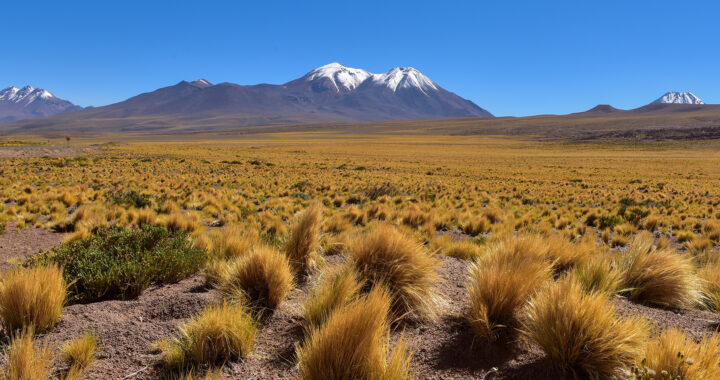Glaciers in the Southern Andes have long served as vital buffers against prolonged dry periods by providing essential summer runoff for agriculture, reservoirs, and urban water supply. A study, which was published on 6 November 2025 in Communications Earth & Environment, warns that by the end of this century, warming-driven glacier shrinkage could drastically reduce this natural water security.
Century-End Climate Warming May Break the Last Defense of Chile Against Megadroughts as Andes Glaciers Shrink
A new study warns that the Southern Andes glaciers, long viewed as natural drought insurance for central Chile, may lose half of their buffering power by 2100. Researchers show that continued warming and glacier shrinkage will leave the region significantly more vulnerable to prolonged megadroughts now lasting beyond 15 years.
Background
Central Chile has been experiencing a megadrought that began approximately 15years ago. This phenomenon has surprised climatologists because it exceeded the severity predicted by standard climate models. This persistent dryness has severely affected reservoirs, agricultural outputs, specific crop yields, and municipal water availability across the region.
The research team, composed of scientists from Chile, Germany, and the United States, focused on the hundred largest glaciers in the Southern Andes, examining their seasonal snow, rain, and meltwater contributions. The study combined observational data with computer simulations to model glacier behavior during multiyear droughts extending over a decade.
Researchers simulated 3 distinct periods. These include 10 years before drought onset, 10 years of megadrought, and then projected glacier evolution to 2100 to estimate meltwater contributions under end-century conditions. The model considered glacier mass loss, snowpack reduction, and downstream hydrological impacts to estimate future summer runoff contributions.
Key Findings
The study demonstrates that glaciers currently provide a critical buffer during extreme dry periods, but their ability to sustain water flow will be significantly reduced by the end of the century. The researchers underscore that smaller glaciers, which were excluded from the simulations, are likely to disappear, further amplifying regional water deficits. Take note of the following:
• Glacial Runoff Currently Buffers Megadroughts
Large glaciers in the Southern Andes provide and maintain summer water flow and source during prolonged dry periods. This runoff supports reservoirs, irrigation, and urban supply, thus mitigating the severity of megadroughts and reducing competition among water users in an otherwise arid environment.
• Halved Buffering Capacity Due to Glacier Shrinkage
Estimates indicate that the largest glaciers will provide only 50 percent of the summer water runoff they supply today by the year 2100 due to glacier shrinkage from climate warming. This reduction leaves water systems far more vulnerable to prolonged drought events and extreme dry seasons spanning years.
• Smaller Glaciers Will Contribute Negligibly or Disappear
The study also underscored that glaciers smaller than the modeled ones are expected to vanish entirely or provide a negligible meltwater contribution. Their disappearance will accelerate the overall decline of natural water storage and further increase the pressure on reservoirs and human consumption systems.
• Megadroughts are Becoming More Frequent and Severe
Observations indicate that prolonged or multiyear droughts now persist longer and with greater intensity than predicted by conventional climate models. Such events have already lasted over 15 years in central Chile. The situation also highlights the urgency of adaptation planning for combating future water scarcity.
• Regional Water Systems Also Face Increased Risk
Central Chile relies heavily on glacier and snowmelt contributions to maintain agriculture, reservoir levels, and urban supply. The estimated reduction in glacial runoff increases the likelihood of severe water shortages, heightened competition for resources, and ecological stress during extended dry periods.
• Notable Global Relevance for Other Mountain Regions
Shrinking glaciers and snowpacks in Mediterranean Europe, the Alps, and other mountain systems may similarly reduce natural drought resilience. The study suggests that water managers and resource planners worldwide should not assume continued glacial buffering in long-term climate adaptation strategies.
Implications
The findings indicate that the Southern Andes glaciers will have lost substantial mass and natural buffering capacity by the end of the century. Policymakers and water managers must prepare for megadroughts without depending on glacier contributions, develop adaptable strategies, and alternative sources of water to maintain ecological and societal resilience.
Investment in water infrastructure, such as reservoirs, desalination plants, and efficient irrigation systems, will be essential to offset the decline of glacial runoff. Planning must integrate multiyear drought scenarios, extreme dry-season projections, and changing seasonal flow patterns to reduce the risk of water scarcity for agriculture and human consumption.
Global climate policies must also address glacier loss as part of adaptation strategies. Coordination between local, national, and international governments and specific agencies is imperative to anticipate hydrological changes, protect vulnerable ecosystems, and ensure sustainable water access in regions that are dependent on mountain snow and ice for survival.
FURTHER READING AND REFERENCE
- Ayala, Á., Muñoz-Castro, E., Farinotti, D., Farías-Barahona, D., Mendoza, P. A., MacDonell, S., McPhee, J., Vargas, X., and Pellicciotti, F. 2025. “Less Water from Glaciers During Future Megadroughts in the Southern Andes.” Communications Earth & Environment. 6(1). DOI: 1038/s43247-025-02845-6
